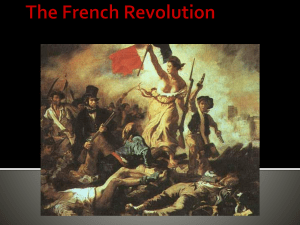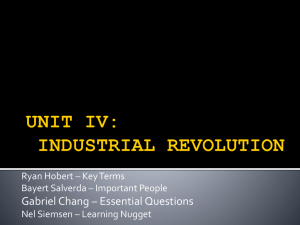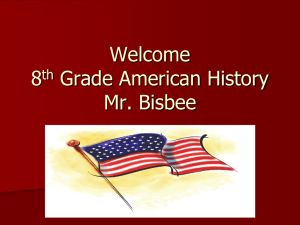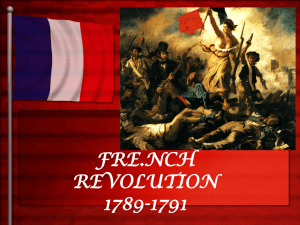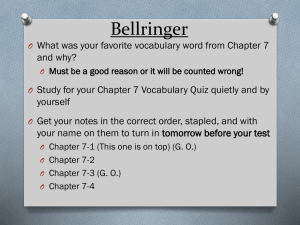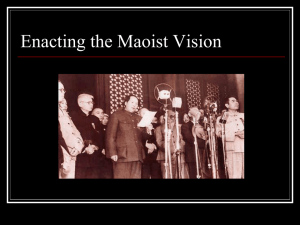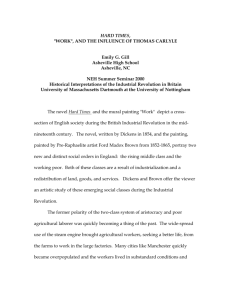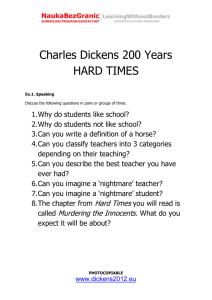THE INDUSTRIAL REVOLUTION
advertisement
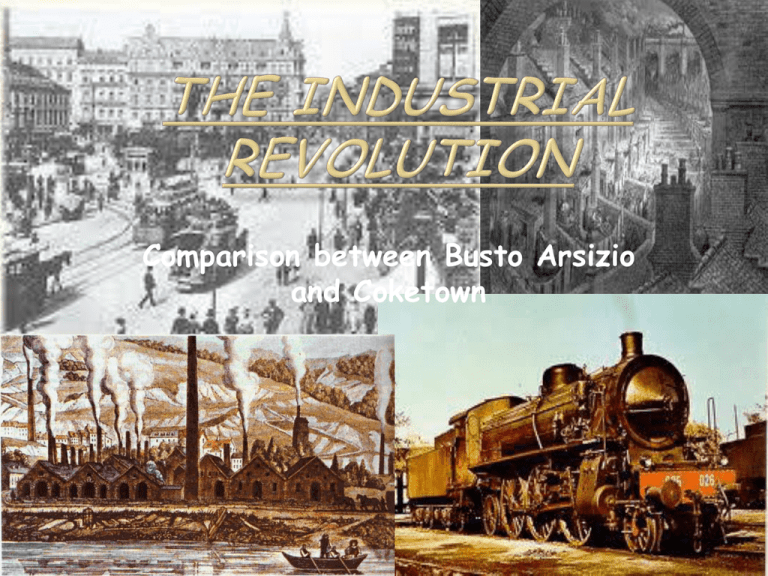
Comparison between Busto Arsizio and Coketown The industrial revolution in Busto The industrial revolution in Cooktown ( England) The english industrial revolution Why the Revolution Began in England Environment changes before and after the revolution Workers conditions Hard Times Coketown Charles Dickens The comparison between Busto Arsizio and Cooktown The industrial revolution of Busto took place between the end of the eighties and the first twenty years of nineties. It was mainly based on three sectors of the local textile craft: the dyeing plant, the knitwear mill and the embroidery. The development of these activities was at the beginning hard since due to the American secession war was stopped the import of cotton so the government decided to reduce the customs charge to support the import of foreign tissues. The textile sector of Busto however grew up in quantity and quality. Were created new enterprises which later became a fundamental part of the local production The Industrial Revolution started in Britain in 18th century, the period between 1760 and 1890. The most important changes of the Industrial Revolution were: the invention of machines to do the work of hand tools; the use of other kinds of power, in place of the muscles of human and of animals, as the steam engine, the first electric battery and the cotton gin (a machine to clean cotton) the adoption of the factory system (the organization of a factory using machines supervised by a director) At the start of this period, Britain was a rural country. There were some large cities, but not many. Most people lived and worked on farms. Richer farmers with lots of land began to take over the smaller farms. This caused a lot of unemployment, so people left the land and began to work in factories. The technological development of the first half of the 19th century brought about many changes in society. Men, women and even children worked in the factories or in the mines for thirteen hours every day for very little money. The poor families sent their children to work in the factories to earn more money. Their salaries were very low and the their working conditions weren't regulated by any law. Because of the dramatic sanitary conditions in which the working classes lived, many diseases spread in the poor slums of the towns. Charles Dickens was born in Portsmouth in England in 1812. When he was twelve he left school and went to work in a factory. That's why he was so interested in the conditions of the working people during the industrial revolution, especially in the children's ones. In 1831 he became a newspaper reporter. Soon he started writing stories for magazines. His first novel, “the pickwick papers”, was published in 1836. Dickens' books tell about poverty and social problems in the 19th century. He wrote stories also about these children in his novels David Copperfield and Oliver Twist. Thomas Gradgrind is an educator and writer on political questions. He has found a school where his educational theories are put into practice: children are taught nothing but facts, and he educates his own children, Louisa and Tom, in the same way, neglecting their imagination and their affections. He also adopts an orphan, Sissy Jupe, whose father worked in a circus before his death. Mr Gradgrind suggests to his daughter that she should marry Josiah Bounderby, a rich factoryowner and banker of the city some thirty years older that she is. Louisa, desiring to help her brother Tom in his career, consents to the marriage, which naturally proves to be very unhappy. Tom who is selfish and lazy, is given a job in Bounderby’s bank, and eventually steals some money from it. Tom’s guilt is discovered and he runs away and hides among the circus folk, who show kindness and sympathy by sheltering him. In the end Gradgrind, helped by the example of Sissy Jupe’s unselfishness and love for others, understands the damage caused by his narrow and materialistic philosophy. • • • It was a town of red brick, or of brick that would have been red if the smoke and ashes had allowed it; but as matters stood, it was a town of unnatural red and black like the painted face of a savage. It was a town of machinery and tall chimneys, out of which interminable serpents of smoke trailed themselves for ever and ever, and never got uncoiled. It had a black canal in it, and a river that ran purple with illsmelling dye, and vast piles of building full of windows where there was a rattling and a trembling all day long, and where the piston of the steam-engine worked monotonously up and down, like the head of an elephant in a state of melancholy madness. It contained several large streets all very like one another, and many small streets still more like one another, inhabited by people equally like one another, who all went in and out at the same hours, with the same sound upon the same pavements, to do the same work, and to whom every day was the same as yesterday and tomorrow, and every year the counterpart of the last and the next. BUSTO ARSIZIO 1880-1920 textile j COKETOWN 1760-1890 oil, chemical products,electricity Chiara Grazioli Francesca Martorella Chiara Segato Sara Moroni


